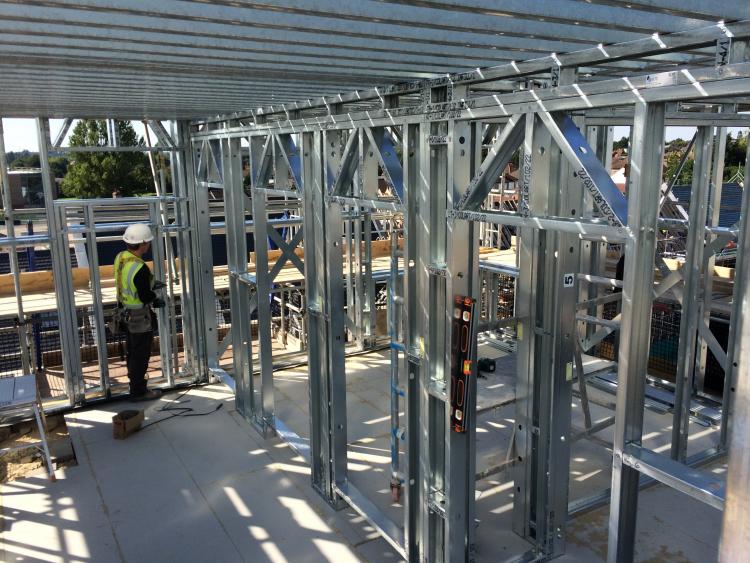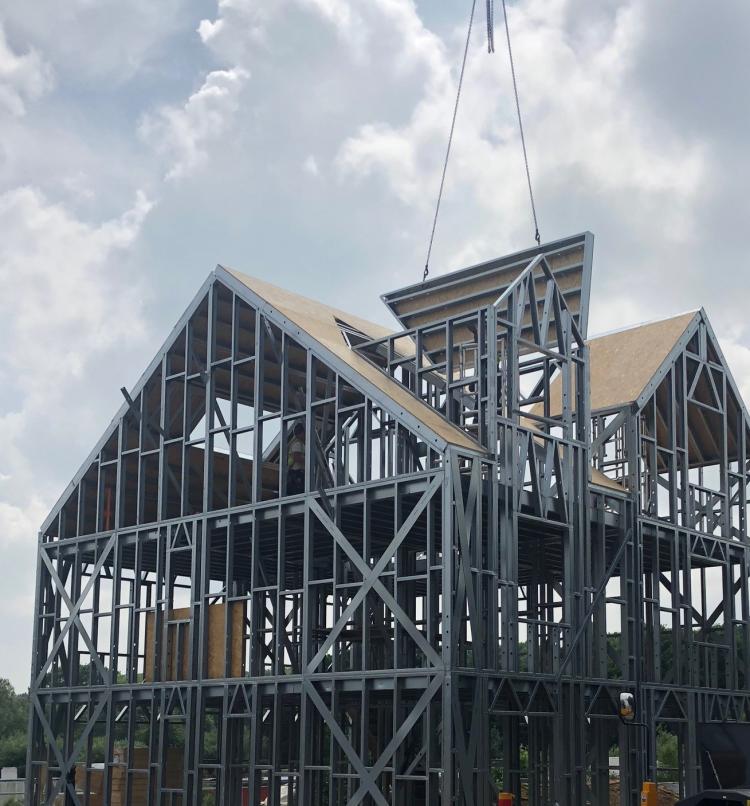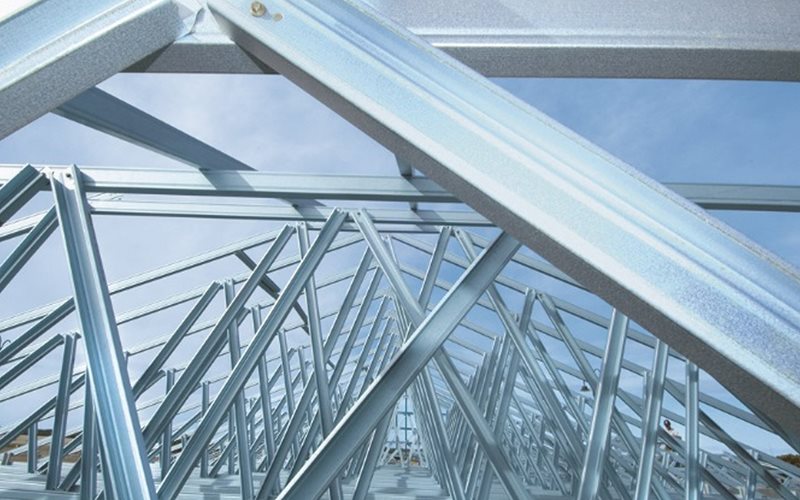Light Steel Frame (LSF)
Here’s a comprehensive and original article in English about Light Steel Frame (LSF) construction. I will include verified references to European and American resources at the end.
—
Light Steel Frame (LSF): A Comprehensive Guide to Modern Lightweight Construction
Light Steel Frame (LSF) construction has emerged as a revolutionary method in the global building industry. Known for its lightweight properties, versatility, and sustainability, LSF has become the preferred choice for residential, commercial, and industrial buildings. This article will explore the characteristics, advantages, challenges, and application of LSF systems while offering an in-depth overview of their adoption in Europe and North America.

—
What is a Light Steel Frame (LSF)?
Light Steel Frame (LSF) is a construction system that uses cold-formed steel (CFS) as its primary structural material. The steel sections, usually galvanized to resist corrosion, are manufactured through cold-forming processes. These sections are assembled into frames that form the skeleton of the building.
LSF systems are pre-engineered and fabricated in factories, ensuring precision and reducing construction time. They are commonly used for walls, floors, and roof structures in small to mid-rise buildings.
—
Advantages of Light Steel Frame (LSF) Construction
1. Lightweight Yet Strong
Cold-formed steel used in LSF structures offers high strength-to-weight ratios. This minimizes the overall weight of the building, leading to cost savings in transportation and foundation work.
2. Rapid Construction
Components of LSF systems are prefabricated, allowing faster on-site assembly. This feature is particularly beneficial in projects with tight deadlines or in remote locations.
3. Durability and Corrosion Resistance
Galvanized steel used in LSF is resistant to rust and weather-related damage, making it ideal for various climatic conditions.
4. High Seismic and Wind Performance
LSF buildings perform exceptionally well in areas prone to earthquakes and high winds. The lightweight nature reduces inertia forces during seismic events, while the flexibility of steel provides excellent wind resistance.

5. Eco-Friendly
Steel is 100% recyclable, making LSF construction an environmentally sustainable option. Additionally, its energy-efficient production processes minimize carbon footprints compared to traditional construction methods.
6. Precision and Customization
Advanced software tools allow for precise designs tailored to individual project needs. Architects and engineers can easily incorporate complex geometries into their plans.
7. Thermal and Acoustic Performance
When paired with appropriate insulation materials, LSF systems provide excellent thermal regulation and soundproofing, enhancing comfort for occupants.
—
Key Applications of Light Steel Frame Construction
1. Residential Housing
Single-family homes
Multi-story apartments
2. Commercial Buildings
Office complexes
Retail outlets
3. Industrial Buildings
Warehouses
Manufacturing facilities
4. Modular Construction
Prefabricated schools, hospitals, and temporary shelters
—
Steps in the Construction Process Using LSF
1. Design and Engineering
Engineers and architects use CAD (Computer-Aided Design) software to create precise models. These models are fed into CNC (Computer Numerical Control) machines for component production.
2. Fabrication
Steel sections are cold-formed in factories. They are then cut, drilled, and labeled for easy on-site assembly.
3. Transportation
Prefabricated LSF components are transported to the construction site. Lightweight steel reduces logistics costs.
4. On-Site Assembly
The assembly process is efficient and requires minimal heavy machinery. Components are connected using screws, bolts, or welding, depending on the design.
5. Finishing and Inspection
Exterior and interior finishes, including insulation, drywall, and cladding, are installed. Finally, thorough inspections ensure compliance with building codes and safety standards.
—
Challenges and Limitations of LSF Construction
1. Higher Initial Costs
The cost of manufacturing cold-formed steel components can be higher than traditional materials such as wood.
2. Thermal Bridging
Steel conducts heat, which may lead to energy inefficiencies without proper insulation.
3. Skilled Labor Requirement
Workers must be trained in handling and assembling LSF components.
4. Limited Availability
In some regions, access to high-quality cold-formed steel and fabrication facilities may be restricted.
—
Case Studies in Europe and North America
1. European Adoption
Countries like the UK and Germany are leading adopters of LSF technology. The UK has implemented LSF in modular housing projects to address housing shortages. The German market uses LSF for energy-efficient construction, aligning with EU sustainability goals.
2. North American Innovations
In the United States, LSF is widely used for mid-rise residential and commercial buildings. The system has gained traction in earthquake-prone areas like California and hurricane-prone regions in Florida due to its resilience.
3. Comparative Performance
Studies from the American Institute of Steel Construction (AISC) and the European Construction Technology Platform (ECTP) reveal that LSF systems outperform traditional materials in terms of lifecycle costs and environmental impact.
—
Future Trends in Light Steel Frame Construction
1. Integration with Smart Building Technologies
LSF systems are compatible with smart home features, allowing seamless incorporation of IoT devices.
2. Sustainable Manufacturing
Advances in green steel production aim to reduce the carbon footprint of LSF components.
3. 3D Printing Integration
Researchers are exploring 3D printing to produce customized steel components, further reducing waste and costs.
—
Conclusion
Light Steel Frame construction is transforming the building industry with its unparalleled advantages in speed, durability, and sustainability. While challenges like thermal bridging and initial costs exist, ongoing research and technological advancements are addressing these limitations. As demand for eco-friendly and efficient construction methods rises, LSF systems are poised to become a cornerstone of modern architecture worldwide.
—
References
1. American Institute of Steel Construction (AISC): www.aisc.org
2. European Construction Technology Platform (ECTP): www.ectp.org
3. World Steel Association: www.worldsteel.org
4. Building and Construction Authority (BCA): www.bca.gov.sg
5. Steel Construction Institute (SCI): www.steel-sci.com
—
If you need additional details or further customization, feel free to ask!
Light Steel Frame (LSF)
Light Steel Frame (LSF)
Light Steel Frame (LSF)
Light Steel Frame (LSF)
Light Steel Frame (LSF)
Light Steel Frame (LSF)
Light Steel Frame (LSF)

